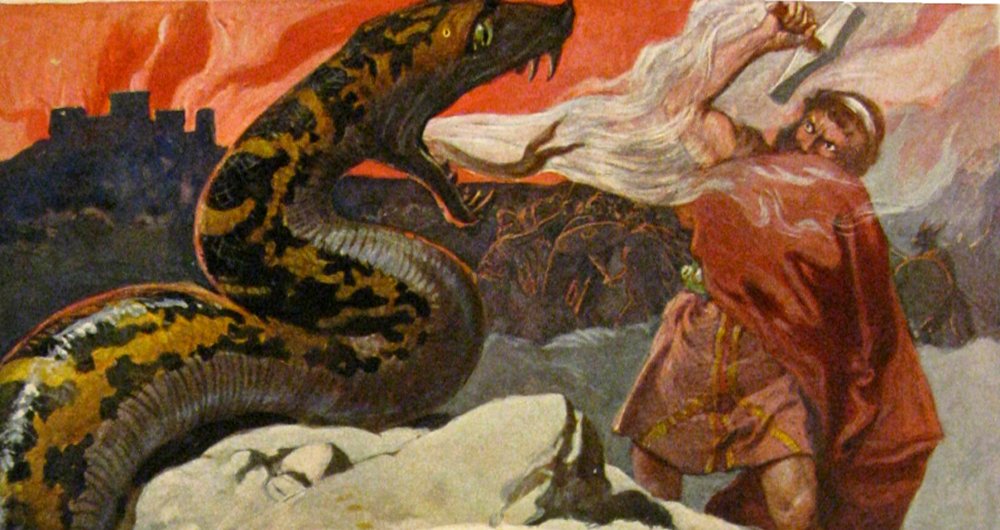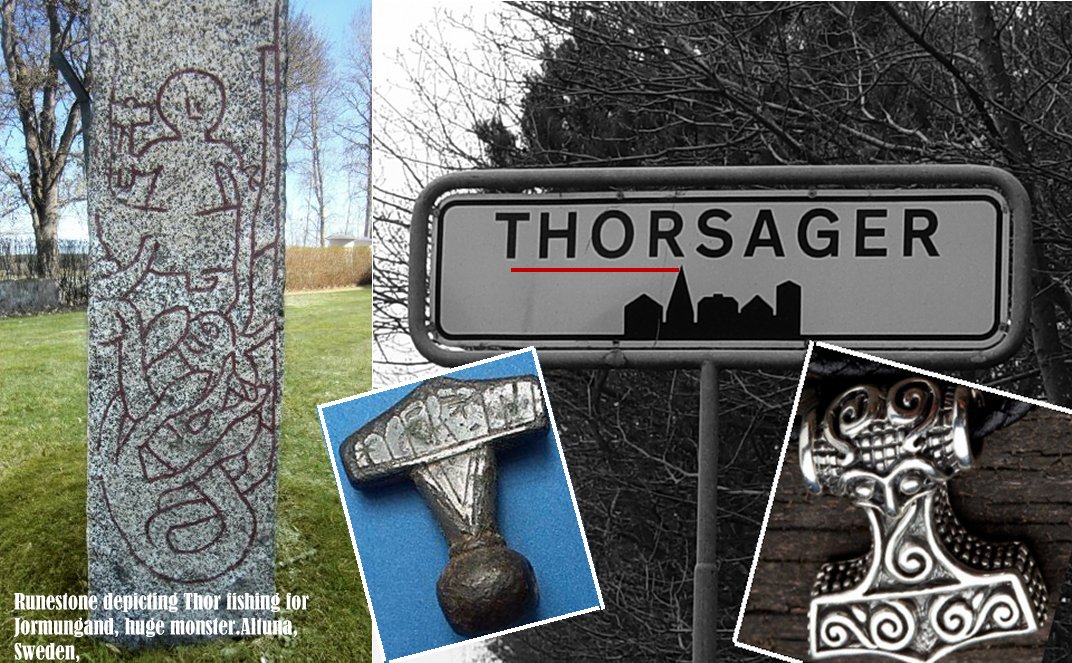Thor: Brave And Mighty Thunder God In Norse Mythology
A. Sutherland - AncientPages.com - Thor was a very popular deity, particularly in Iceland and the western part of Norway; several complex rituals related to him existed, and when Christianity began to spread in these parts of Europe, it was not easy to eliminate the deep roots of rituals and the cult of Thor.
Photo of the original Thor's hammer in silver found somewhere in Skåne, Sweden, that belonged to a collecton owned by the baron Claes Kurck. Unreliable sources says that the hammer was found in Kabbarp near Staffanstorp in Skåne, Sweden. Photo cropped from the original. SHM 9822:810. Image credit: Ola Myrin, Statens historiska museum/SHM - CC BY 4.0
Thor (called ‘Asa-Thor’ or ‘Ouka Thor’) was a brave and righteous God who mastered storms and lightning, fought giants threatening him, and upheld the world's order.
Thor’s hammer was frequently depicted on boundary stones, carved on gravestones, laid in the bride’s lap at weddings, or raised over a newborn child.
The Viking people possessed silver hammer amulets, miniature hammers designed to be worn as pendants that symbolized their veneration of Thor, the most powerful of the gods and guardian of those who farmed the land.
This protective aspect of Thor is mentioned in Snorri Sturluson’s tales in the ‘Prose Edda’ and in the same way described by the German chronicler Adam of Bremen, who lived and worked during the 11th century.
On the wagon drawn by two goats (Tanngniostr and Tanngrisnir), or just walking, Thor entered Jötunheimr, the home of the fearful giants, armed with his beloved hammer, Mjölnir, iron gloves, a magic belt called ‘Megingiard’ and a mighty magical iron staff Gríðarvölr, so he could kill the giant Geirröd.
He spread destruction and death in Jötunheimr because his most important duty was to protect Asgard against the giants. This formidable weapon could crush everything in its way and, afterward, immediately return to his hand.
Considered invincible, Thor liked to chase giants and demons and kill them with Mjölnir, but this strong and brave god was vulnerable without his hammer, stolen one day by the giants, persistent enemies of the gods.
He had two palaces in Asgard: Thrudheim ("World of strength" in Old Norse) and Bilskirnir (Old Norse "lightning-crack"), the largest building of Asgard with 540 chambers, where he lived with his family. That is the greatest house known to men, according to Snorri’s Edda.
Thor’s widespread popularity has been demonstrated in many ways, especially since his name was popularized abroad by the Vikings, who gave names to their settlements often related to ‘Thor.’
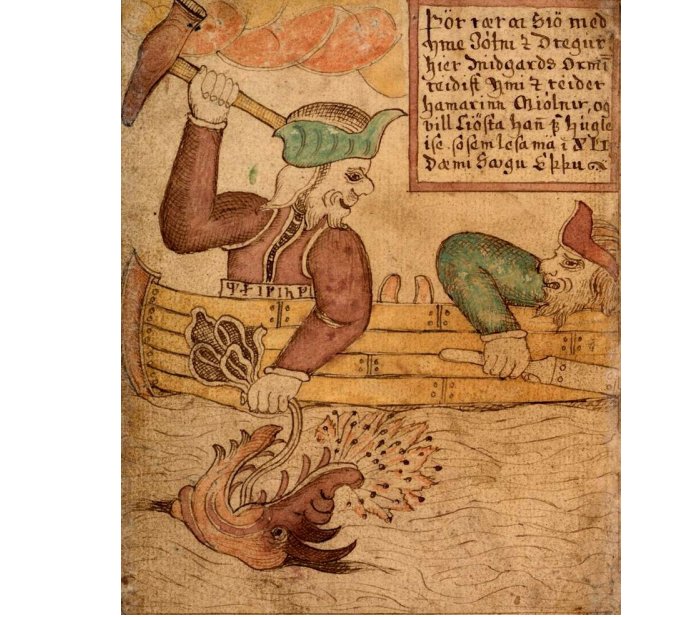 Jakob Sigurðsson - 18th century Icelandic manuscript SÁM 66 - Public Domain
Jakob Sigurðsson - 18th century Icelandic manuscript SÁM 66 - Public Domain
Especially, Iceland has many harbors and headlands with Thor-related names like Thorsness and Thorshofn. In Denmark, there is a town known as Thorsager (Danish for "Thor's Acre" a reference to the Norse god Thor.) Popular, are also Nordic names Thor, Thorgrim, Thorsten. ‘Thursday’ is named after this great god, and Torsdag (in Danish, Norwegian, and Swedish ) is named after god Thor - in English ‘Thursday.
Credit: Adobe Stock - David
Carvings in places as far apart as Altuna in Sweden and Gosforth, England, illustrate Thor’s deeds; legends tell about his encounters with the world’s serpent Midgardsorm. One recounts how Thor went fishing and baited his hook with the head of an ox and managed to catch the serpent on his line.
Written by – A. Sutherland AncientPages.com Staff Writer
Updated on May 19, 2024
Copyright © AncientPages.com All rights reserved. This material may not be published, broadcast, rewritten or redistributed in whole or part without the express written permission of AncientPages.com
Expand for referencesMore From Ancient Pages
-
 Unusual Old Stone Map Found In The American Southwest
Featured Stories | May 9, 2024
Unusual Old Stone Map Found In The American Southwest
Featured Stories | May 9, 2024 -
 2,800-Year-Old Urartu Jars Uncovered In Eastern Turkey
Civilizations | Sep 9, 2015
2,800-Year-Old Urartu Jars Uncovered In Eastern Turkey
Civilizations | Sep 9, 2015 -
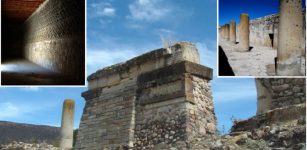 Zapotecs’ Magnificent City Of Mitla Was Destroyed By A Seismic Landslide
Archaeology | Aug 23, 2024
Zapotecs’ Magnificent City Of Mitla Was Destroyed By A Seismic Landslide
Archaeology | Aug 23, 2024 -
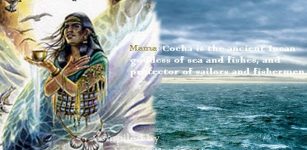 Mama Cocha – Inca Goddess Of The Sea With Strong Connection To Lake Titicaca, Peru
Featured Stories | May 26, 2020
Mama Cocha – Inca Goddess Of The Sea With Strong Connection To Lake Titicaca, Peru
Featured Stories | May 26, 2020 -
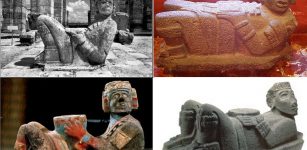 Image Of The Day: Chacmool – Famous Ancient Statue Of Pre-Columbian Mesoamerica
Image Of The Day | Sep 10, 2015
Image Of The Day: Chacmool – Famous Ancient Statue Of Pre-Columbian Mesoamerica
Image Of The Day | Sep 10, 2015 -
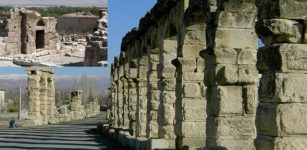 Ancient City Of Tyana And A 1600-Year-Old Rare Octagonal Church Unearthed In Central Anatolia Turkey
Archaeology | Aug 11, 2020
Ancient City Of Tyana And A 1600-Year-Old Rare Octagonal Church Unearthed In Central Anatolia Turkey
Archaeology | Aug 11, 2020 -
 Maori God Pourangahua And His Flying Bird Traversing The Ancient Skies
Featured Stories | Oct 4, 2015
Maori God Pourangahua And His Flying Bird Traversing The Ancient Skies
Featured Stories | Oct 4, 2015 -
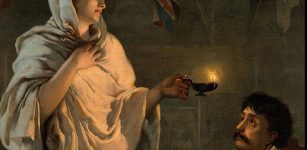 On This Day In History: ‘Lady With The Lamp’ – Florence Nightingale Was Born – On May 12, 1820
News | May 12, 2016
On This Day In History: ‘Lady With The Lamp’ – Florence Nightingale Was Born – On May 12, 1820
News | May 12, 2016 -
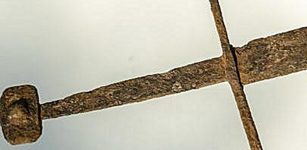 Medieval Well-Preserved Sword Discovered In A Peat Bog In Poland
Archaeology | Jun 21, 2017
Medieval Well-Preserved Sword Discovered In A Peat Bog In Poland
Archaeology | Jun 21, 2017 -
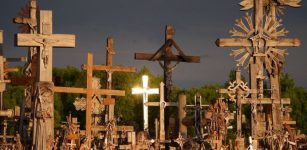 Hill Of 100,000 Crosses In Lithuania Survived Against All Odds
Featured Stories | May 23, 2017
Hill Of 100,000 Crosses In Lithuania Survived Against All Odds
Featured Stories | May 23, 2017 -
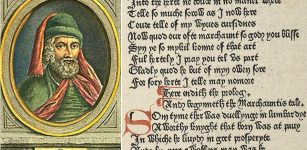 On This Day In History: William Caxton Printed His First Book – On Nov 18, 1477
News | Nov 18, 2016
On This Day In History: William Caxton Printed His First Book – On Nov 18, 1477
News | Nov 18, 2016 -
 Children Of Lir And Aoife’s Curse – Celtic Legend That Inspired The Swan Lake Ballet
Featured Stories | Feb 8, 2024
Children Of Lir And Aoife’s Curse – Celtic Legend That Inspired The Swan Lake Ballet
Featured Stories | Feb 8, 2024 -
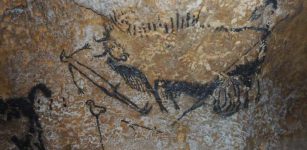 Ancient People Possessed Far Greater Knowledge Of Astronomy Than Previously Believed – Researchers Say
Archaeology | Nov 28, 2018
Ancient People Possessed Far Greater Knowledge Of Astronomy Than Previously Believed – Researchers Say
Archaeology | Nov 28, 2018 -
 Mysterious Ancient Shapeshifters Who Guided Humans And The Battle Of The Gods Described In Sacred Texts And Myths
Featured Stories | Oct 27, 2021
Mysterious Ancient Shapeshifters Who Guided Humans And The Battle Of The Gods Described In Sacred Texts And Myths
Featured Stories | Oct 27, 2021 -
 Seven Times People Discovered The Americas And How They Got There
Featured Stories | Sep 9, 2022
Seven Times People Discovered The Americas And How They Got There
Featured Stories | Sep 9, 2022 -
 On This Day In History: Edict Of Pistres ‘A New Law’ Against Viking Raids Issued – On July 25, 864
News | Jul 25, 2016
On This Day In History: Edict Of Pistres ‘A New Law’ Against Viking Raids Issued – On July 25, 864
News | Jul 25, 2016 -
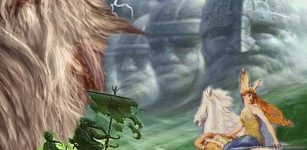 Valhalla – The Hall Of The Fallen Where Viking Hero Warriors ‘Einherjar’ Dwell After Death
Featured Stories | Mar 11, 2018
Valhalla – The Hall Of The Fallen Where Viking Hero Warriors ‘Einherjar’ Dwell After Death
Featured Stories | Mar 11, 2018 -
 Mystery Of The Lost Arctic Civilization- Two Ancient Mummies Found At The Zeleny Yar Necropolis
Archaeology | Jul 20, 2017
Mystery Of The Lost Arctic Civilization- Two Ancient Mummies Found At The Zeleny Yar Necropolis
Archaeology | Jul 20, 2017 -
 Anglo-Saxon Harpole Treasure Reveals More Secrets – Unique Medieval Silver Cross Found
Archaeology | Jan 31, 2023
Anglo-Saxon Harpole Treasure Reveals More Secrets – Unique Medieval Silver Cross Found
Archaeology | Jan 31, 2023 -
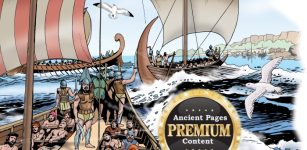 The Carthaginians’ Secret: Mysterious Desert Land Or America Found By Mistake?
Featured Stories | Jul 27, 2017
The Carthaginians’ Secret: Mysterious Desert Land Or America Found By Mistake?
Featured Stories | Jul 27, 2017


